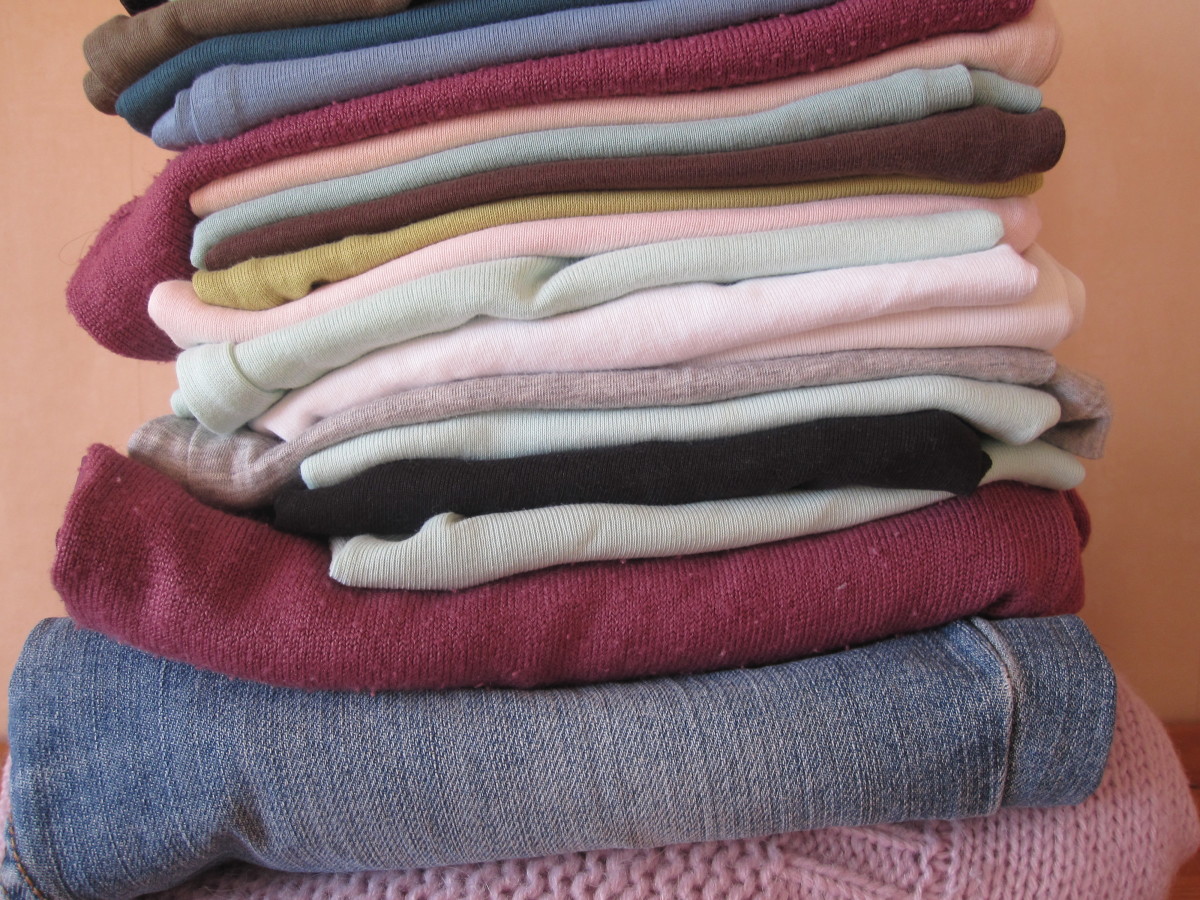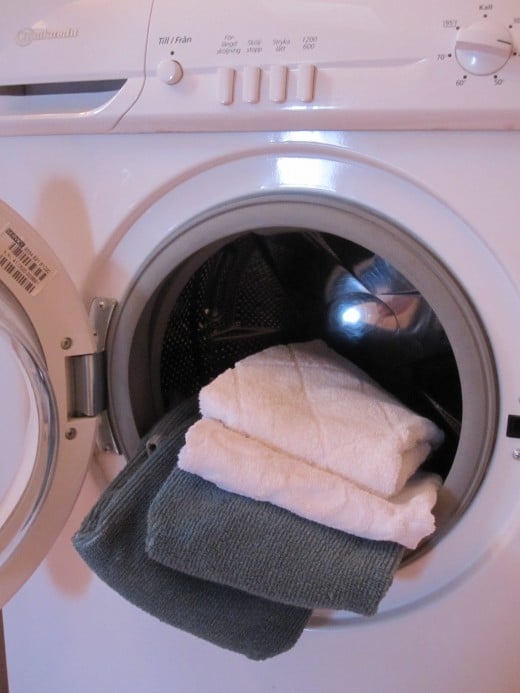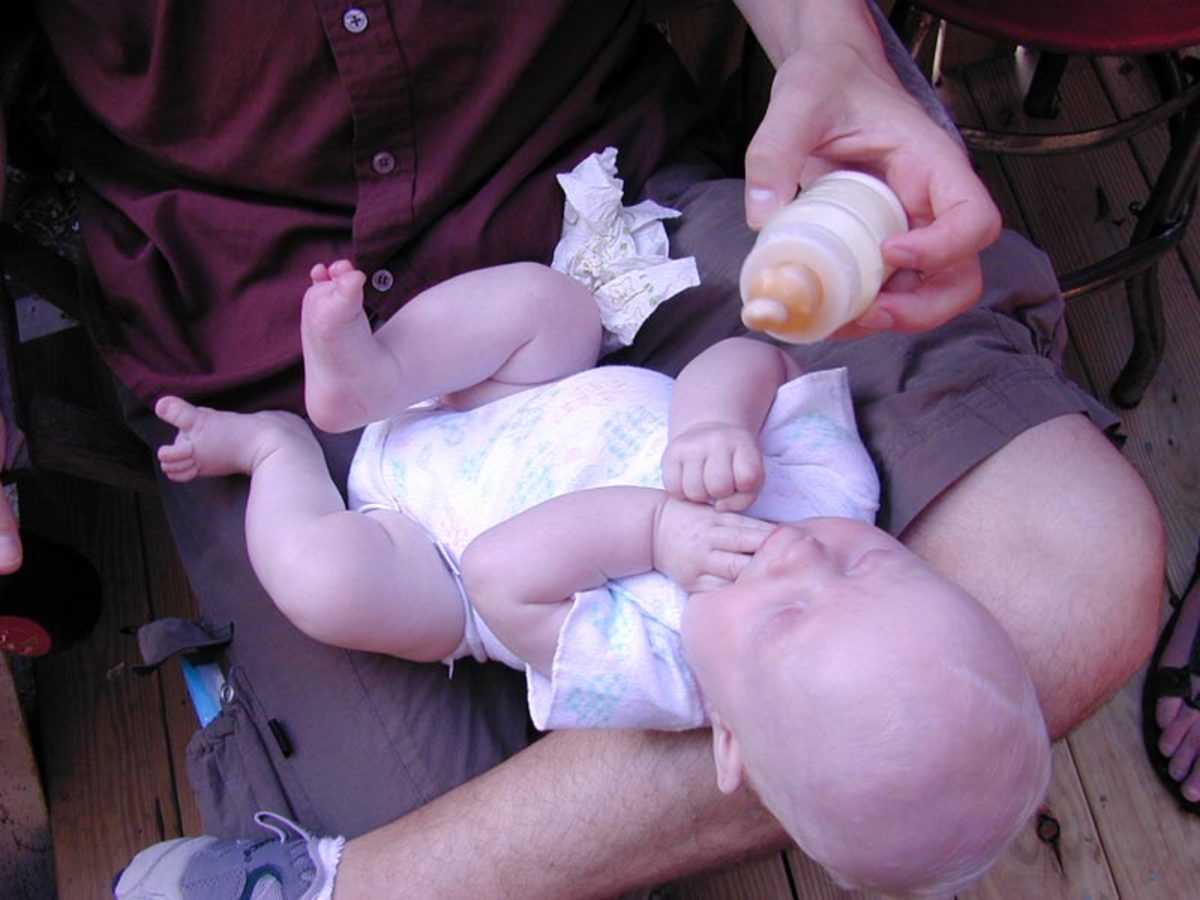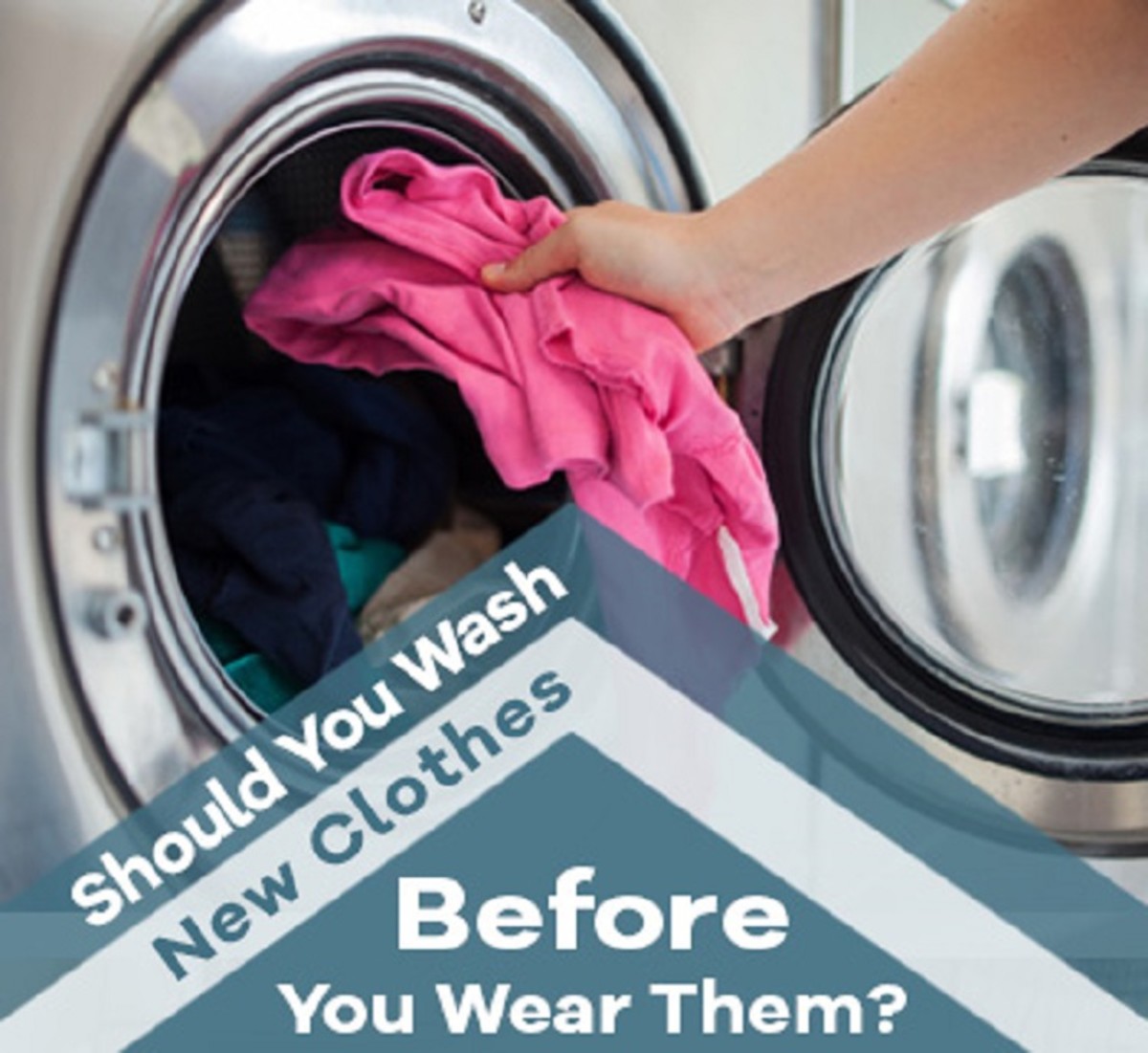Do you have toxins in your clothing? Knowledge is the way to conscious consumption of clothes!
Anyone who thinks that he is too small to make a difference has probably never had a mosquito in the bedroom. "/ Jan Cederquist
Yes, I know that we can’t avoid chemicals and toxins in our way of living, but if we at least know what we surround us with or what we put close to our body we have the ability to choose to some extent. The purpose with this hub is to make you aware of what sorts of toxins you can find in your clothing. Then it is up to the conscious consumer to choose and also make a difference to our environment in the long run!
By choosing more eco-friendly products every one of us can make a small but not insignificant difference and eventually the most dangerous substances will be taken out from the production. There will always be chemicals involved in the manufacture of clothing, otherwise many of them is not possible to produce, but we don’t have to buy new clothes that contain the most dangerous chemicals.

Why are there toxins in the clothing?
The toxins come from the manufacture of clothing where a variety of chemicals are being used. There is process chemicals, finishing chemicals and chemicals added for certain purposes. These chemicals are then spread globally from the place they are made to the place they are used which mostly is on a totally different place. Some of these chemicals can be toxic to humans and to the environment. Our way of living with big consumption leads too manufacturing in bigger quantities than ever before and we also invent or think that we need more and more different types of textiles and clothing. This various use of clothing and textiles means that more and more chemicals are added during manufacture.


How the toxins get into the clothing?
The process chemicals may be added during fibre manufacture, during bleaching, dyeing and printing, etc. In some cases chemicals are added to the finished product to achieve various functions, such as antibacterial treatment of sports clothing, flame retardant treatment of furnishing textiles, impregnation of rain wear and chemicals to prevent mildew during transport and storage. Another type of chemicals is those who come with the very popular plastic pressure on clothes, like T-shirts. These flashing and fun plastic pressures may contain softening agents, such as phthalates.
Several of the chemicals that are used are toxic to human health and to the environment. And it isn’t only the manufacture spot that are affected; some of these chemicals remain in the clothes you buy and when you wear them they come in contact with your skin! In this way the chemicals do damage in several places during the manufacture and sale of clothing. First, the chemicals used as a processing aid cause damage to the workers and the region of the world where they are made, and then the chemicals remain in the final product and during product use and disposal, it is also released into the environment in other regions.
Some examples of hazardous chemicals that can be found in your clothing and what they are used for!
Antibacterial
They are used to prevent bacteria and hence bad odours and can be found in such clothes as sporting goods and cleaning equipment. Example of antibacterial used is triclosan, which is skin irritant and can cause adverse effects in aquatic, and silver ions which are highly toxic to aquatic organisms.
Fungucides
Fungucides is used to kill or inhibit fungus or fungal spores and in clothing it is used to prevents mould during transport. One fungicide that is being used is DMF (Dimethylfumerat). Sometimes fungicides can be present in those small bags labelled “anti- mould agent”. DMF has also been found in furniture and it can cause strong skin reactions. The substance has been forbidden in EU since 2009 and goods of products allegedly containing DMF or where the concentration of DMF is higher than 0,1 milligrams per kilograms is forbidden to sell.
Azo dyes
Azo dyes are a large group of substances containing the chemical azofuntion which gives colour properties. The substances are used to provide the textiles and leather clear and strong colours and are used widely due to their low costs. But some Azo dyes may pose health risk to humans by being broke down to mutagenic/carcinogenic aryl amines. Most Azo dyes are water-soluble and can therefore easy transfer into our bodies by skin contact and breathing. Therefore some of the azo dyes that are used in textiles and leather are prohibited within the EU. Some azo dyes are also allergenic.
Disperse dyes
Disperse dyes are used to stain synthetic fibres, some are allergenic.
Formaldehyde
Formaldehyde counteracts shrinkage and wrinkles and is also used to fix dyes and dirt removal. Formaldehyde can cause skin irritation and allergy.
Phthalates
Phthalates is the name of a group of chemical compounds based on phthalic substance. Phthalates is used in clothes as plasticizers in particular plastic pressure. Some phthalates, may impair fertility.
Nonylphenol ethoxylates
Nonylphenol ethoxylates (NPEs) is used in washing, dying and pressure on textiles. This substance breaks down into Nonylphenol (NP) that is very persistent and accumulates in biota in the environment. It is also very toxic to aquatic organisms and is suspected to impair fertility. The substance isn’t possible to treat in sewage treatment plants and will end up in the sludge and water environment.
Heavy metals
Heavy metals are elements and most of the heavy metals and their compounds are toxic and dangerous in high amounts or in the wrong place. Heavy metals can be carcinogenic or can cause allergies for the user.
Chrome
Chrome is also used in tanning leather. Hexavalent chromium can cause allergies.
Lead
Lead can be used in dyeing and in metal parts on clothing etc. Lead can accumulate in the body and effect brain development in children. Lead can also cause long time effects in the aquatic environment.
Nickel
Nickel can occur in metal components, clothing and are allergenic.
Persistent compounds
Some substances are persistent and accumulate in living organisms or can be toxic. These substances can be spread widely by water and air since they are persistent and can cause damage to all living. One example of persistent substances that are used in textiles is per fluorinated substances.
Perfluorinated compounds
Some Perfluorinated compounds (PFCs) are used as impregnations of textiles. Many of PFCs are persistent and are hazardous to the environment and have been also shown to cause reproductive and endocrine functions in mammals. PFCs are a complex group of substances with many subdivisions. One PFC is Perfluorooctane sulphonate (PFOS) that is one of the PFCs that are primary used in impregnations of textiles. PFOS can be found nowadays in both polar bears and human blood and breast milk and is now prohibited within in Europe.
Clothes with dirt- and water-repellent finish and garments made of breathable material, which emits water vapour and is windproof have been treated with various types of coatings on the fabric. Those coatings often consist of fluorine-based substances that provide a dirt- and water-repellent finish.
Other persistent compounds used in textiles are brominates flame retardants and dioxins. Dioxins are created as a rest product that is created during bleaching with chlorine.
So, this is the first step to conscious consumption of clothing; information and knowledge!
I love fashion myself and do a lot of shopping but I try to stay away from the sort of clothing that I suspect contains a big amount of chemicals. I also try to buy eco-design and sustainable design. If we don’t know we can’t make wise choices. Since clothing is very close to our skin we should be more careful and try to do our best to protect our skin, our bodies and also the environment. If you want tips on how you can reduce the risk of toxin in your clothes read: how to be a consious consumer of clothing!







